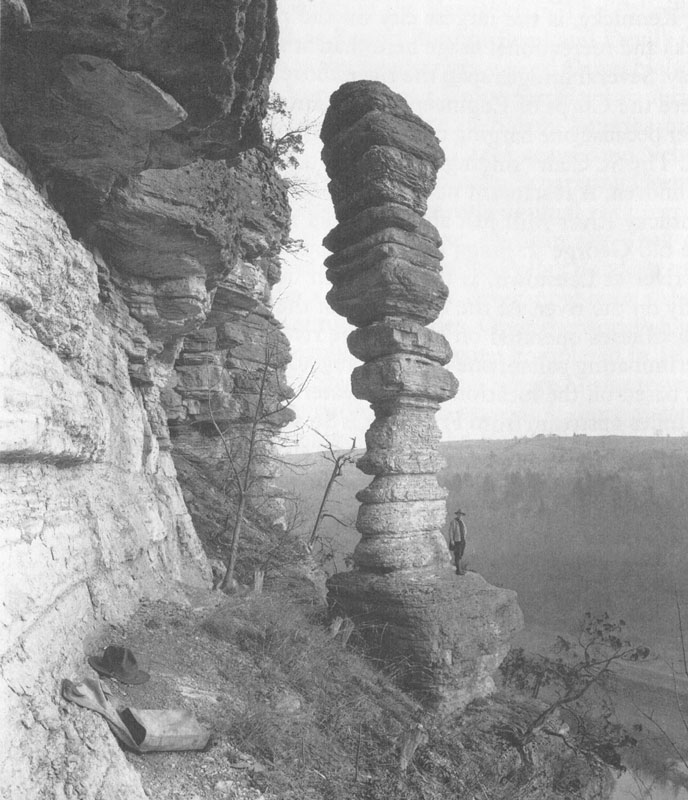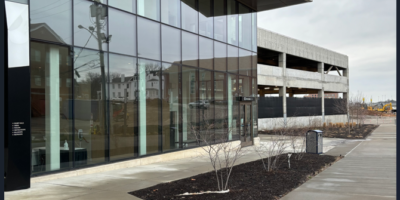Mr. C. said (December 19, 1817)
We
Thomas Ragland of Halifax Va.
& Thomas W. Cobb of Oglethorpe Ga.
for the sum of four hundred & fifty dollars
from the Honorable Henry Clay received
have granted, sold & delivered
& by these presents
do grant, sell & deliver
unto the said Henry Clay
& his heirs & assigns
a certain negro wench Darkey
we warrant to be a slave for life
and to be sound and healthy
& we also will warrant & defend
the title of her against the right
title, claim or demand
of all & every person
or persons
whatsoever.





New Jawn
I just finished Pulitzer Prize-winner authorJoseph Ellis’ “The Cause: The American Revolution and Its Discontents, 1773-1783.” It’s excellent. I enjoy reading early American history and have read carefully quite a number of books on the subject, and this one goes in my top-ten list. It told me things that I hadn’t read before and posed questions that I hadn’t considered.
And I say that because recently I’ve been giving a lot of thought to Henry Clay, brought about by the goofiest of things — reading about a big to-do when some soccer mom/dad or tee ball mom/dad mowed part of the Clay Shrine’s lawn so that it could be better used for whatever game was at hand. From the reaction of the Clay Shrine’s director or whateverthefuck is his title, you’d have thought that the Great Lawn of the Clay Shrine had been despoiled forever. I’d never given much thought to the Clay Shrine — just another memorial to a dead white racist — but then I saw a few paragraphs about the Great Compromiser in Ellis’ book, then a few more about the number of enslaved people he held in bondage, then a paragraph or so about one of his enslaved hanging himself from a tree in the Great Lawn, and so on.
And by coincidence, the next book on my list (which I’ve yet to finish) is Randall Kennedy’s “Say It Loud.” Kennedy isn’t small potatoes — a tenured professor at Harvard Law School — and this book is a collection of his essays written for non-lawyer types like me. That said, the very first essay, ” Shall We Overcome? Optimism and Pessimimism in African American Racial Thought” also has some Clayisms that caught my eye, one of which, when he was bloviating in support of the American Colonization Society, which sought to send free Blacks back to Africa, wrote that he approved of the colonization plan because it would “rid our country of a useless and pernicious, if not dangerous, portion of its population.
Of course there’s lots more, a lifetime’s worth of racist screed opined by the person celebrated by the Clay Shrine. You can read his will, in which he parcels out enslaved people to his family, giving directions about who might be sold and what might be done with the profit. So, yeah, there’s all that, too.
And then there’s the Henry Clay Shrine shining on a hill on the richest road in Lexington. And there’s a high school NAMED after his sorry ass. And there’s a titled professorship at the University of Kaintuckie devoted to Clayism. And, well, it all bothers me quite a bit.
Now I get that the Clay Shrine isn’t quite the same as the Morgan statute that used to grace our courthouse. Clay worked to “save the Union, ” and, well, if the compromise involved maintaining slavery, importing Africans and selling them to the highest bidder to do with what they wanted, well that was just fine with The Great Compromiser. But for me, it really puts things in a much different light when I drive down Richmond Road and see Nice Folks having a bit of lunch at the Gingko Cafe and touring the Shrine, or to see people using the Shrine as a pretty backdrop for a wedding, or to see lots of people sitting in the Great Lawn, just a few feet from where an enslaved man committed suicide and where bought people were brought and sold people were taken away. And it really bothers me even more when I see Black and Brown young people wearing Henry Clay sweats and regalia, ’cause let me be clear, the Shrine is nothing but a shrine to a motherfucker from the distant past who bought and sold human beings, thought that continued enslavement was a tiny price to pay for “preserving the Union,” and freed Blacks as dangerous and unworthy of life in Amerika.
So that’s my rant. Have a nice day.
Michael Benton
New Jawn, thank you for the book recommendations (I will seek them out) and for your piercing insight into the legacy of the “Great Compromiser.” I grew up in San Diego, CA and I only learned two things about Kentucky, Daniel Boone led “settlers” through the Cumberland Gap on the way West and that Kentucky’s beloved Henry Clay was the eloquent “Great Compromiser” who worked to resolve some of the great conflicts of his day. It is good to see the latter history being questioned and dismantled.
I currently live in Paris, KY, half a block from the Paris Cemetery, which seems to be the Henry Clay Family resting place. If you walk in you are immediately made aware of this by the huge phallic memorials centered upon the immediate left in the largest section. This largest prime section seems to be reserved for white protestants. Further back, with a separate section, with a completely back(door) entrance, and until recently, not as well maintained grounds (an inspiring descendent worked to improve this section), is the African American section. Way off to the left, serviced by another separate entrance/road, and another name, is the Catholic section. For me, this is a striking example of the entrenched and extended racist ideology in structural view for all to see, or to blindly ignore.
Thanks again for your response!